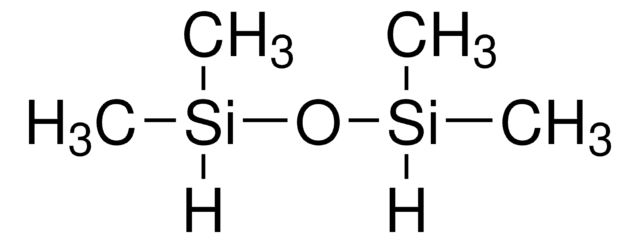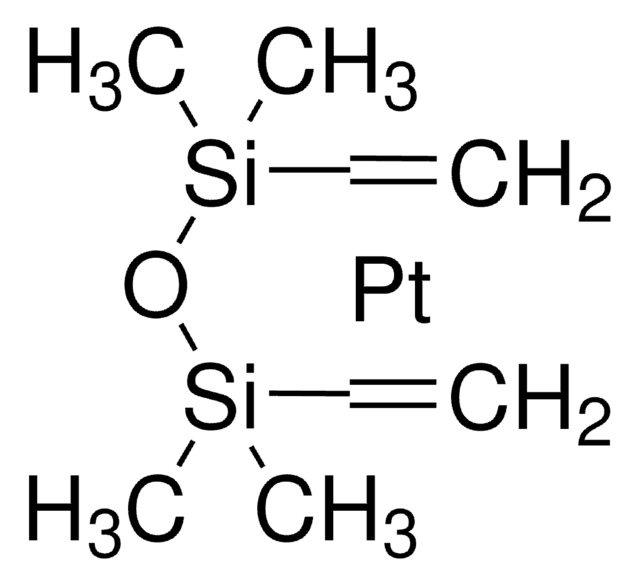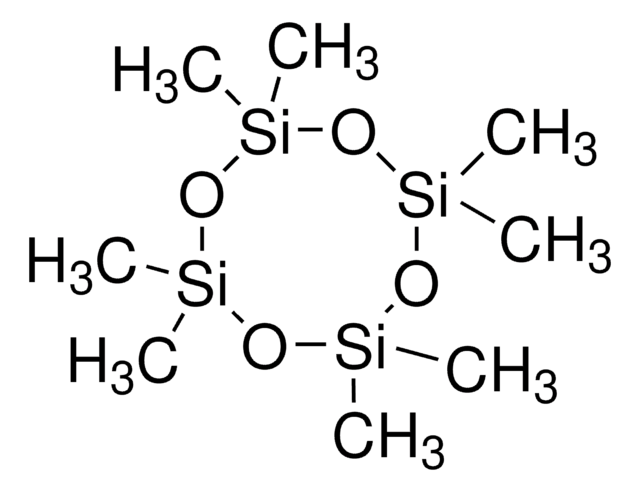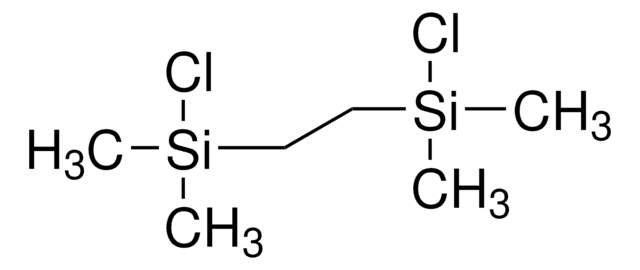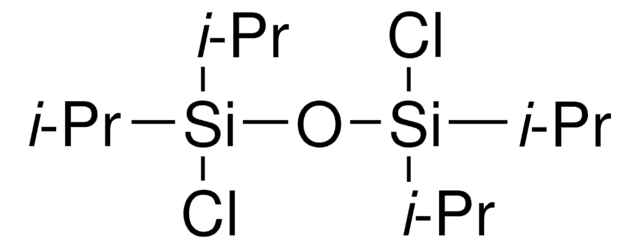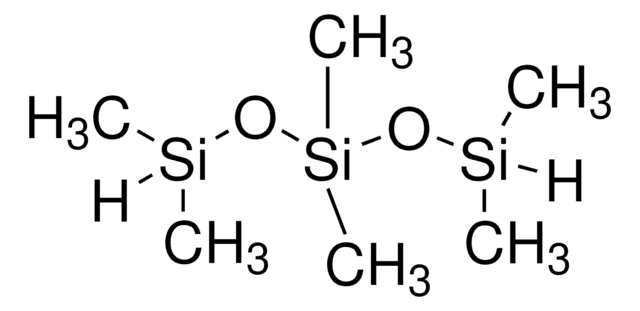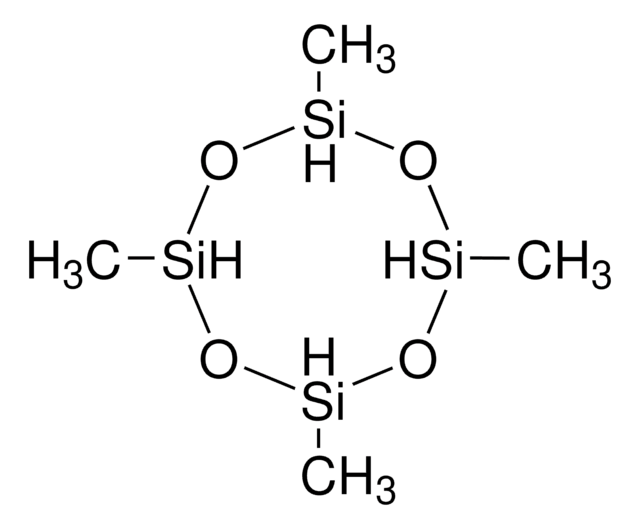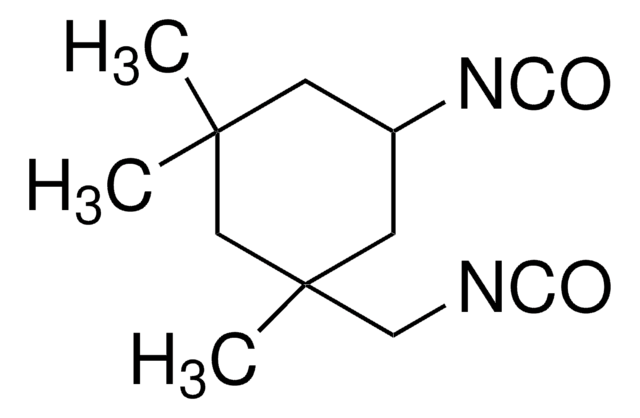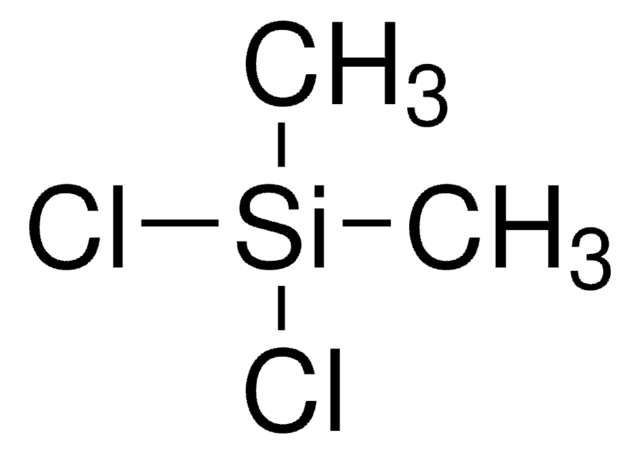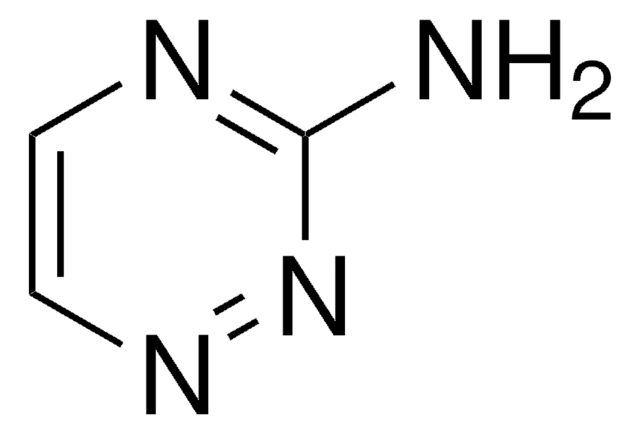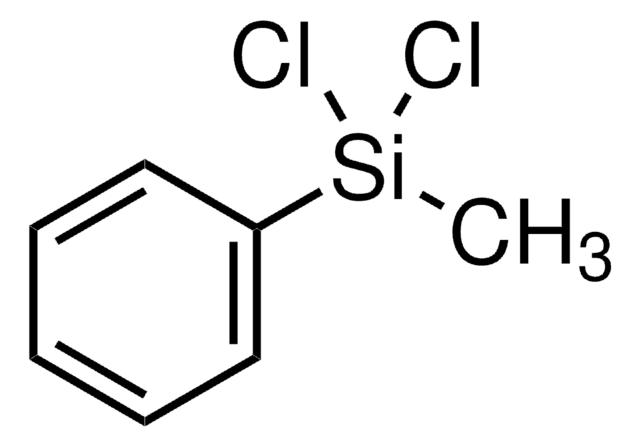Alle Fotos(1)
Wichtige Dokumente
465585
1,3-Dichlor-1,1,3,3-tetramethyldisiloxan
97%
Anmeldenzur Ansicht organisationsspezifischer und vertraglich vereinbarter Preise
Alle Fotos(1)
About This Item
Lineare Formel:
(CH3)2Si(Cl)OSi(Cl)(CH3)2
CAS-Nummer:
Molekulargewicht:
203.21
Beilstein:
1741218
EG-Nummer:
MDL-Nummer:
UNSPSC-Code:
12352101
PubChem Substanz-ID:
NACRES:
NA.22
Empfohlene Produkte
Assay
97%
Brechungsindex
n20/D 1.407 (lit.)
bp
138 °C (lit.)
Dichte
1.039 g/mL at 25 °C (lit.)
SMILES String
C[Si](C)(Cl)O[Si](C)(C)Cl
InChI
1S/C4H12Cl2OSi2/c1-8(2,5)7-9(3,4)6/h1-4H3
InChIKey
DMEXFOUCEOWRGD-UHFFFAOYSA-N
Suchen Sie nach ähnlichen Produkten? Aufrufen Leitfaden zum Produktvergleich
Anwendung
1,3-Dichloro-1,1,3,3-tetramethyldisiloxane can be used to prepare:
- A Silicon-based fluorene polymer by reacting with a dibromofluorene derived Grignard reagent.
- ansa-Metallocene compound i.e, ansa-[TiCl2{η5:η5-(C5H4SiMe2)2O}].
- Silaanthracenophanes.
Signalwort
Danger
H-Sätze
Gefahreneinstufungen
Flam. Liq. 2 - Skin Corr. 1B
Lagerklassenschlüssel
3 - Flammable liquids
WGK
WGK 3
Flammpunkt (°F)
59.0 °F - closed cup
Flammpunkt (°C)
15 °C - closed cup
Persönliche Schutzausrüstung
Faceshields, Gloves, Goggles, type ABEK (EN14387) respirator filter
Hier finden Sie alle aktuellen Versionen:
Besitzen Sie dieses Produkt bereits?
In der Dokumentenbibliothek finden Sie die Dokumentation zu den Produkten, die Sie kürzlich erworben haben.
Kunden haben sich ebenfalls angesehen
Synthesis and crystal structures of μ-1, 3-bis (η5-tetramethylcyclopentadienyl)-1, 1, 3, 3-tetramethyldisiloxane)[ η2-bis (trimethylsilyl) ethyne] titanium (II) and a doubly tucked-in product of its thermolysis
Horacek M, et al.
Journal of Organometallic Chemistry, 658(1-2), 235-241 (2002)
Carbon-Silicon coupling between fluorenyl Grignard reagents and dichlorosilanes for synthesis of novel copolymers and chemical properties of the copolymers
Kitamura N and Yamamoto T
Applied Organometallic Chemistry, 17(11), 840-842 (2003)
Synthesis and Structures of New Silaanthracenophanes
Lee I, et al.
Bulletin of the Korean Chemical Society,, 33(1), 255-260 (2012)
Rebecca A Musgrave et al.
Chemical science, 10(42), 9841-9852 (2020-02-06)
Ring-opening polymerisation (ROP) of strained [1]- and [2]metallocenophanes and related species is well-established, and the monomer ring-strain is manifest in a substantial tilting of the cyclopentadienyl ligands, giving α angles of ∼14-32°. Surprisingly, tetracarba[4]nickelocenophane [Ni(η5-C5H4)2(CH2)4] (2) undergoes ROP (pyridine, 20
Unser Team von Wissenschaftlern verfügt über Erfahrung in allen Forschungsbereichen einschließlich Life Science, Materialwissenschaften, chemischer Synthese, Chromatographie, Analytik und vielen mehr..
Setzen Sie sich mit dem technischen Dienst in Verbindung.